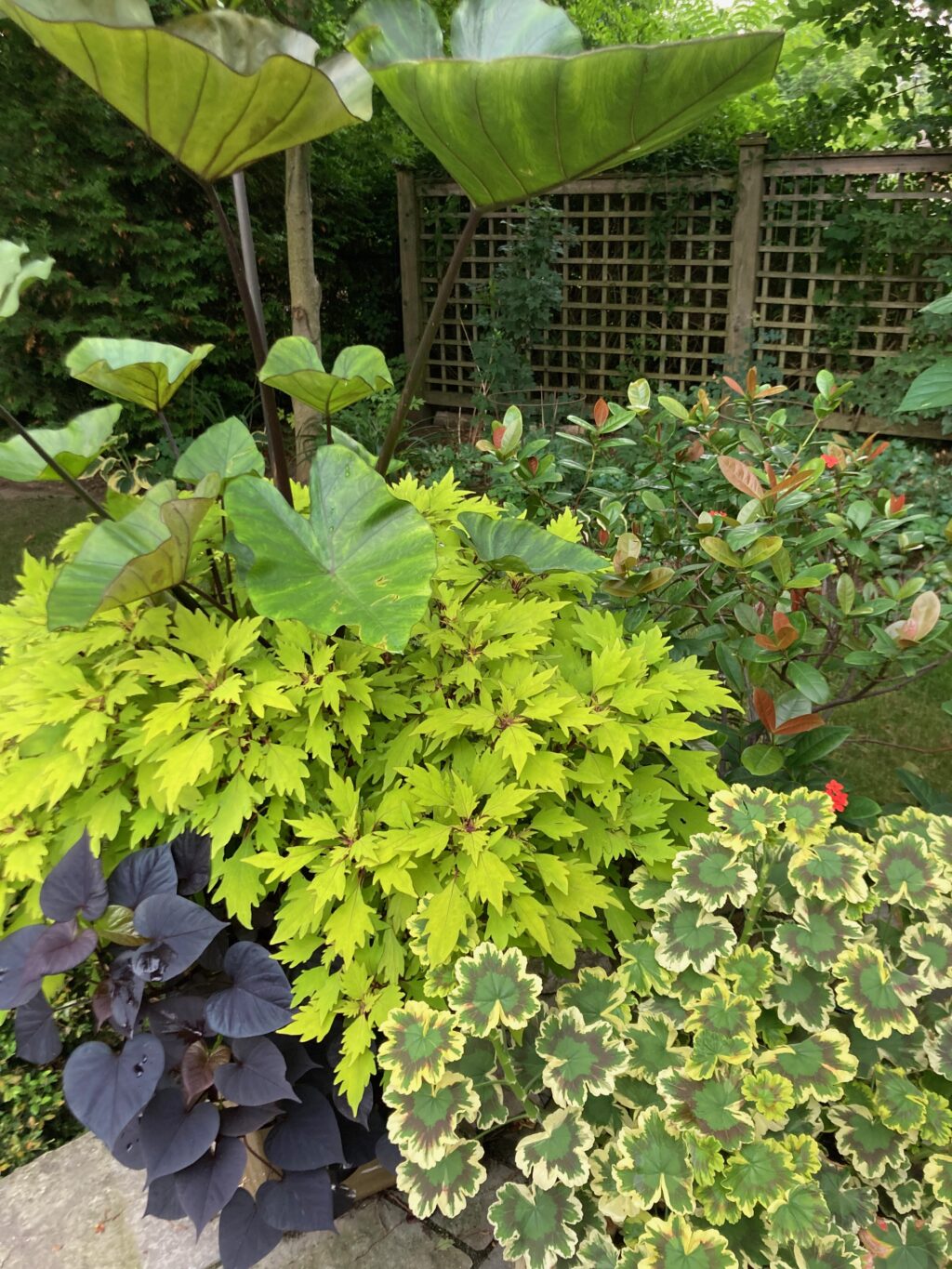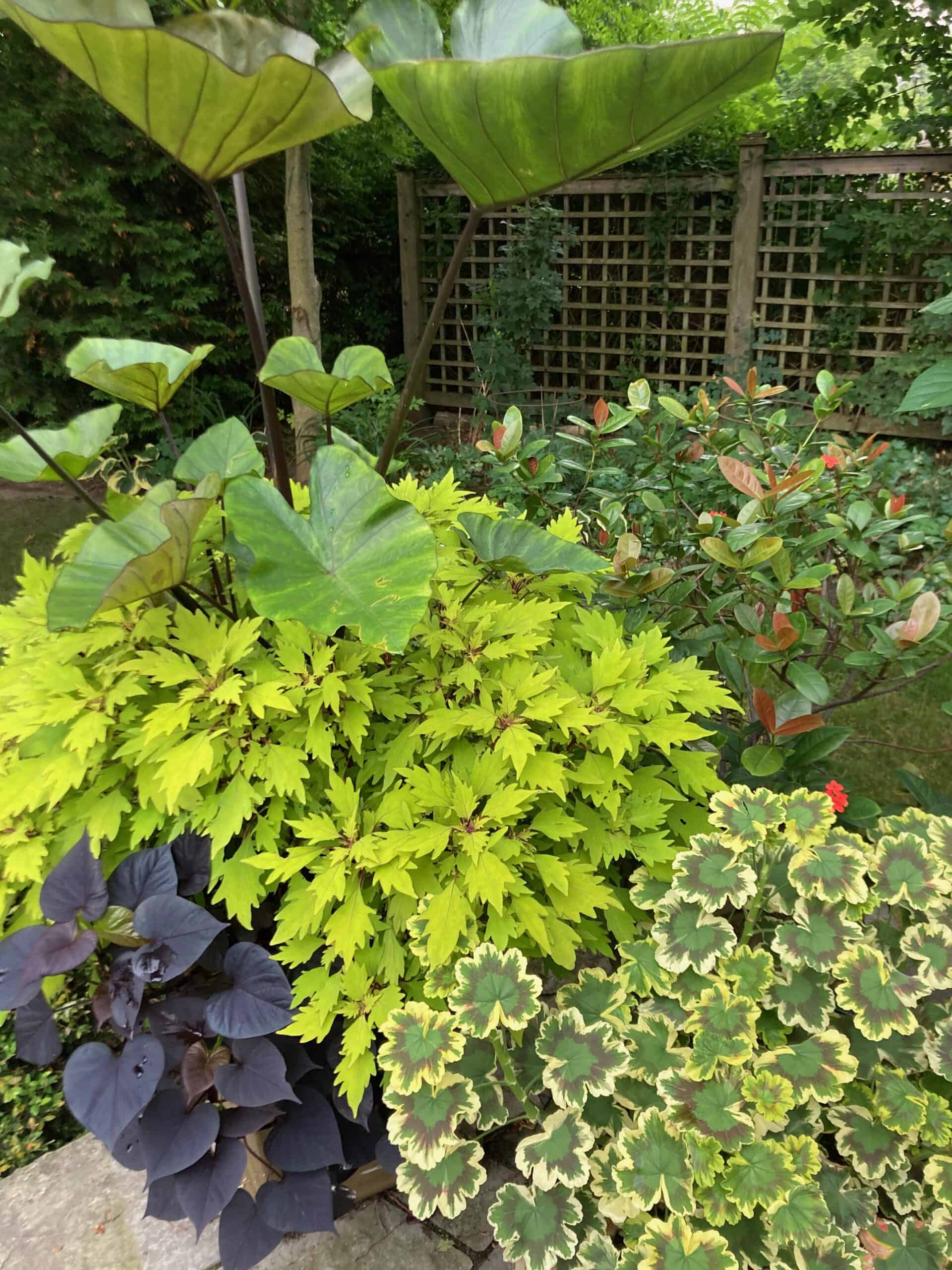Before your vegetable beds and containers are emptied and perennials cut back (if you choose to do that), take a few moments to walk around your garden to see what worked and what didn’t. Some crop failures may have been weather or pest related, but if a few cultivars you tried for the first time this year were flavourless or not to your liking, now is the time to jot down their names so you remember to select a different variety of bean, tomato or pepper next year.
I grew 15 tomato varieties this year. Growing conditions can greatly affect tomato flavour, so this year’s favourites may not be next year’s should I choose to grow them again. However, because ‘Golden Jubilee’ (large, meaty yellow), ‘Hungarian Heart’ (large, red, prolific) and ‘Mushroom Basket’ (deep red, ruffled and ridged, super prolific) were dependable and delicious this year, I’ll seek these out again.
This is also when I take a hard look at the containers of annuals and tender perennials on the patio. These we see every day, so it’s important that they look presentable from late spring to early fall. I rarely plant the same combination of plants twice so there are bound to be duds as well as stars, and this year was no exception.
Here’s my highly subjective list of hits and misses. The most successful were the plants that tolerated the long stretches of hot, humid, rainless days we had.

Coleus: Vegetatively grown coleus varieties are generally more heat and sun resistant than seed-grown types. Although they’re foliage plants, the swirls, variegations and leaf sizes available are as vibrant as the boldest flowers. Colorblaze Royale Pineapple Brandy was a good contrast to dark-leaved ‘Coffee Cups’ colocasia and Sweet Caroline Sweetheart Jet Black sweet potato vine. (I wish plant marketing companies would limit their trademarked names to two or three words.) Next year’s pots may be filled solely with coleus.
Judith Adam’s “Summer-to-winter coleus” describes how to grow a reminder of these beauties all winter long.
Petunias, etc.: I’m rather fond of petunias and their brethren, such as calibrachoas, Supertunias and Surfinias. This year, I tried the newly introduced Machu Morado. It’s called a Mexican petunia, although its botanical name is Ruellia simplex. My two plants produced three blooms between them, so I’m crossing that petunia off my list. Instead, I’ll add more Supertunia Mini Vista White, fragrant purple Supertunia Royal Velvet and Headliner Sky Blue petunia, a soft blue-lavender that goes with everything. These three certainly pumped out the flowers all summer.
Gomphrena: Another good performer was the new Truffula Pink gomphrena. The half-inch (2-cm) hot-pink puffballs dotted with bright yellow stamens atop wiry stems looked like mini firework displays in two containers of Prince Tut papyrus, yellow double calibrachoa, variegated Swedish ivy and deep purple petunias. Gomphrena makes a good cut flower, too.
Finally, a plug for pentas: These annuals love heat and sun, but loath overwatering. I’ve grown them in containers for a few years and find they do better massed on their own — that way, they don’t get overwatered when their other companions might be thirsty. As far as I know there are only four or five colours available, including white, red, pink and an odd muddy lavender. My favourite is the clear pink, which always looks fresh and perky even on the hottest, stickiest days.
Other garden news and views
- Saving seed is an economical way to garden. Empress of Dirt describes how to save zinnia seeds, which stay viable for many years when stored properly.
- For those of you growing winter squash, such as butternut, acorn or pumpkin, it’s getting close to harvest time. Get Busy Gardening offers guidance on how to tell when winter squash are ready to harvest and how to pick them so they store well.
- One might think hedges are labour-intensive, but not evil. “The mysterious disappearance of the world’s longest shrubbery,” a story from the BBC, describes historians’ investigations into an incredible, impassable hedge planted in 1869 that ran from the Indus River to the Mahanadi in India. The goal of the thorny thicket was to prevent salt smugglers from the coast into British-controlled states. Although massive — eight feet (2.4 m) tall and 2,300 miles (3,701 km) — the hedge has disappeared. It has been described as a “monstrous system to which it would be almost impossible to find a parallel in any tolerably civilized country.” A fascinating story.

